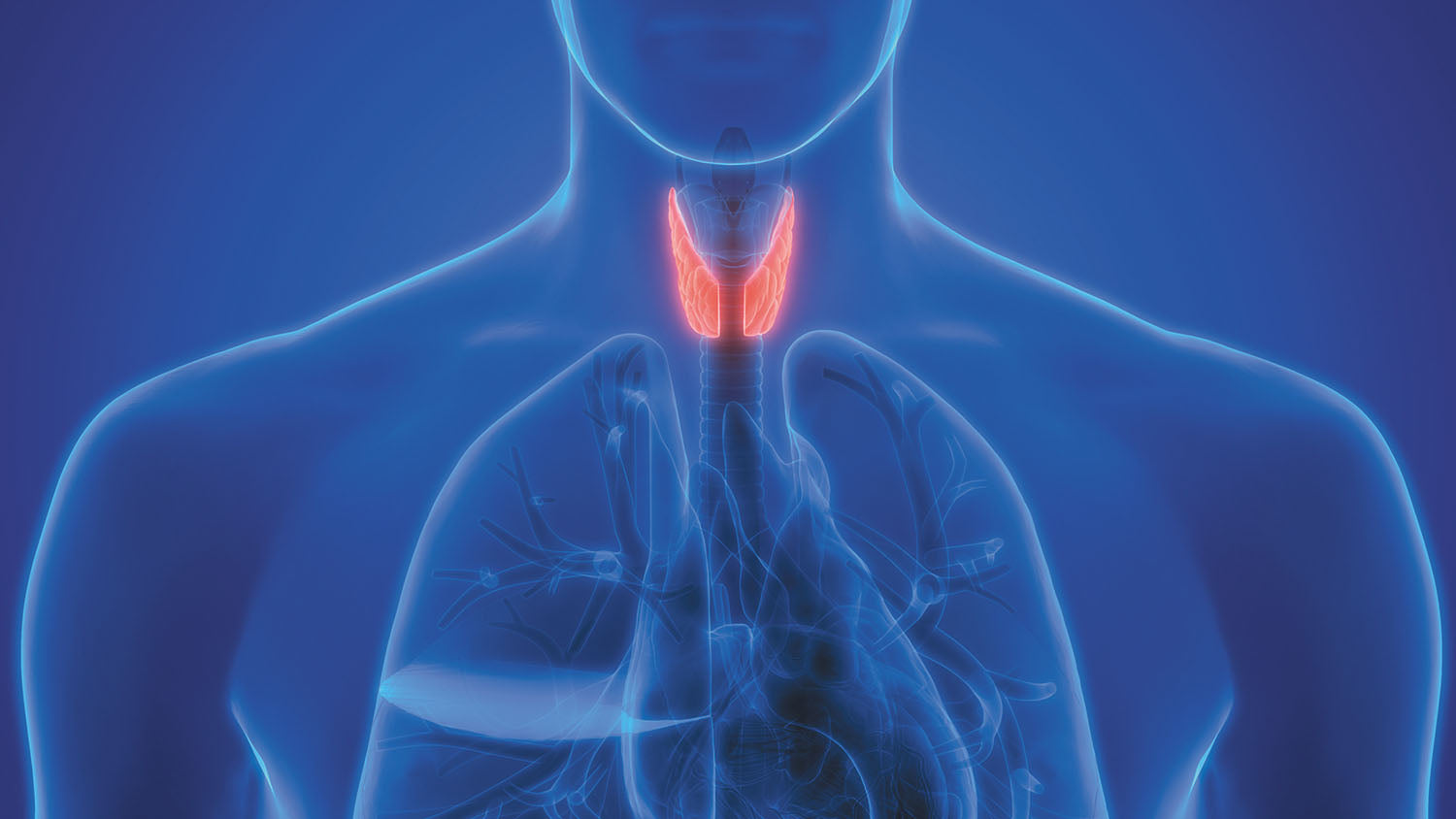

Thyroid Letter
July 13, 2018
Our patients sometimes have questions about their thyroid hormone therapy, getting different answers and advice from their various doctors. I created a letter explaining our approach to thyroid management so patients can share with their physicians.
Dear Fellow Physician,
Many patients on thyroid hormone replacement are stressed and confused by their doctors telling them that a low TSH indicates over-treatment, and that they are hyperthyroid as a result. Numerous studies have shown that the feedback loop for pituitary production of TSH is not reliable once a patient is on thyroid hormone therapy.
If patients are managed according to their TSH level, they will inevitably be undertreated and their hypothyroid symptoms will not be fully relieved. Patients on adequate thyroid hormone doses enjoy more complete resolution of their symptoms, and they are not hyperthyroid since their resting heart rate and reflexes are normal, and their Free T3 and Free T4 are kept within optimal ranges. Keep in mind that the current reference ranges are drawn not from healthy or ideal patients, but from the population at large which has seen a significant increase in the incidence of hypothyroidism over the past 2 decades. Furthermore, peripheral serum thyroid hormone levels say nothing about the cellular response to the hormones, for which we rely on our patients’ symptoms (or lack thereof).
Fraser et al investigated the correlation between tissue thyroid activity and serum blood tests (TSH, free T4 and T3) and published their results in the British Medical Journal. The study authors concluded that “The serum concentration of thyroid stimulation hormone is unsatisfactory as the thyrotrophs in the anterior pituitary are more sensitive to changes in the concentration of thyroxin in the circulation than other tissues, which rely more on triiodothyronine (T3).” They found a suppressed or undetectable TSH was not an indication or a reliable marker of over replacement or hyperthyroidism. They state,
“It is clear that serum thyroid hormone and thyroid stimulating hormone concentrations cannot be used with any degree of confidence to classify patients as receiving satisfactory, insufficient, or excessive amounts of thyroxine replacement…The poor diagnostic sensitivity and high false positive rates associated with such measurements render them virtually useless in clinical practice…Further adjustments to the dose should be made according to the patient’s clinical response.” (121)
The positive predictive value of the TSH, which is the likelihood that as suppressed TSH indicates over replacement or hyperthyroidism, was determined to be 16%. In other words, a suppressed TSH is not associated with hyperthyroidism or over-replacement 84% of the time, making it an inaccurate and inappropriate marker to determine appropriate replacement dosing. Additionally, the TSH becomes an even worse indicator the optimal replacement dose in the following situations: if a person has insulin resistance or obesity (68,69,70,71,106); is a chronic dieter (4,51,66,72,112,113,114,115,116,117,118); has diabetes (69,73,74,75,76); has depression (73,77,78,79); has bipolar depression (73,77,81,82); has a neurodegenerative diseases (73,83,84,85,86,87); is of older age (73,74,88-100); has chronic fatigue syndrome (73,101,102); has fibromyalgia (73,103,104); migraines (73); has a chronic infections (MT63)(73); is stressed or anxious (73,79,80); has heart failure or cardiovascular disease (73,99,104,105,108); suffers from migraines (73); has inflammation or a chronic illness (73,109,110,111); or has high cholesterol or triglyceride levels (57,58,60,72,106,107,114).
In a study published in the British Medical Journal, Meir et al also investigated the correlation of TSH and tissue thyroid effect. It was shown that the TSH level had no correlation with tissue thyroid levels and could not be used to determine a proper or optimal thyroid replacement dose. The authors concluded that “TSH is a poor measure for estimating the clinical and metabolic severity of primary overt thyroid failure. … We found no correlations between the different parameters of target tissues and serum TSH.” They stated that signs and symptoms of thyroid effect and not the TSH should be used to determine the proper replacement dose (122).
Alevizaki et al also studied the accuracy of using the TSH to determine the proper thyroid replacement dose in T4 treated individuals. The study found that such a practice of using the TSH, although common, results in the majority of tissues being hypothyroid, except for the pituitary. They conclude, “TSH levels used to monitor substitution, mostly regulated by intracellular T3 in the pituitary, may not be such a good indicator of adequate thyroid hormone action in all tissues (123).”
In a study published in the Journal of Clinical Endocrinology and Metabolism, Zulewski et al also investigated the accuracy of TSH to determine proper thyroid replacement. The study found that the TSH was not a useful measure of optimal or proper thyroid replacement, as there was no correlation between the TSH and tissue thyroid levels. Serum T4 and T3 levels had some correlation, with T3 being a better indictor than T4. In contrast, a clinical score that involved a thorough assessment of signs and symptoms of hypothyroidism was shown to be the most accurate method to determine proper replacement dosing. The authors also agreed that it is improper to use the TSH as the major determinant of the proper or optimal doses of thyroid replacement, stating “The ultimate test of whether a patient is experiencing the effects of too much or too little thyroid hormone is not the measurement of hormone concentration in the blood but the effect of thyroid hormones on the peripheral tissues [symptoms] (124).”
Scientific References available at:
https://www.nahypothyroidism.org/thyroid-hormone-transport/#treatment
We strongly encourage you to investigate the optimal treatment of your patients with hypothyroidism. It is one of the most rewarding ways in which we have learned to help our patients.
Sincerely,
TLC Physicians


